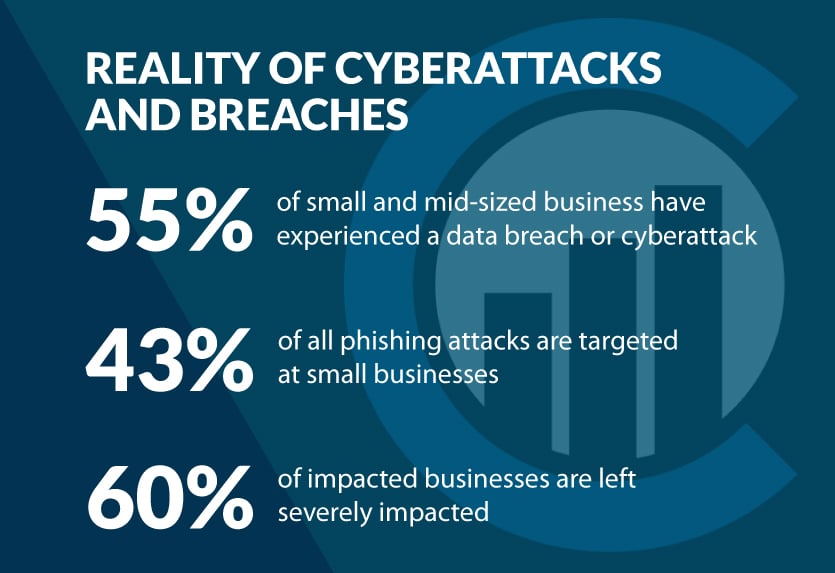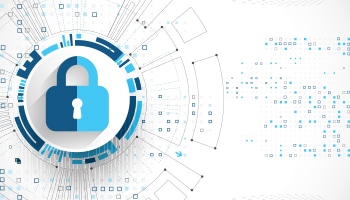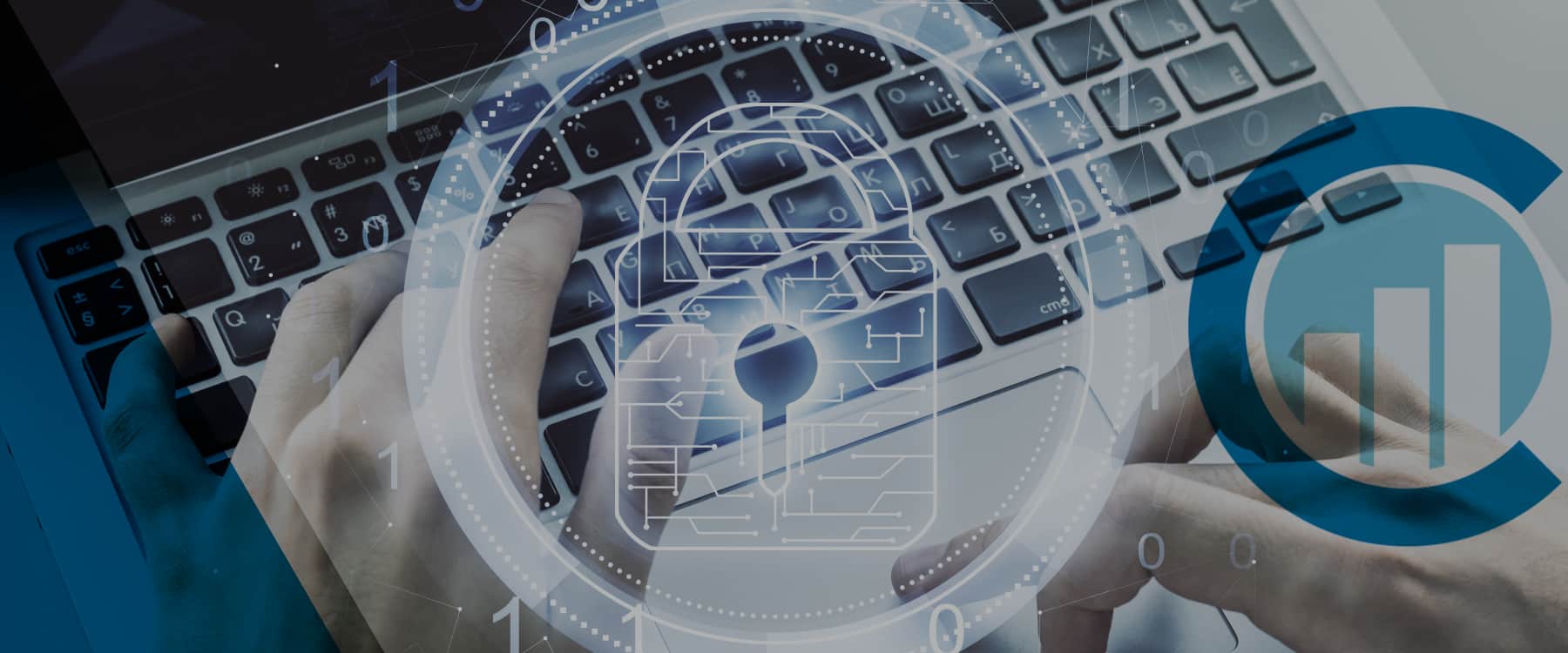
55% of small and mid-sized businesses have experienced a data breach or a cyberattack. 60% of the affected businesses are severely impacted by an attack they experienced. The most common attacks that SMBs experience are ransomware, identity theft, phishing, and spam.*
In today’s rapidly evolving cybersecurity landscape, where more and more people work remotely on their own unsecured devices, protecting your organization’s endpoints is of paramount importance. Endpoints, which include computers, mobile devices, and servers, are often the primary targets of cyberattacks. To defend against these threats effectively, it’s essential to understand the different types of endpoint protection solutions available.
This article will explore three key approaches to endpoint security: EPP (Endpoint Protection Platform), EDR (Endpoint Detection and Response), and XDR (Extended Detection and Response). In addition, we will showcase the custom approach and solutions which CloudScale365 has developed thanks to our long-lasting experience in helping companies to ensure their compliance and online security.

What is EPP – Endpoint Protection Platform
Endpoint Protection Platforms, or EPPs, are comprehensive security solutions designed to safeguard endpoints from various threats, including malware, ransomware, and phishing attacks. EPPs offer a wide range of security features, making them an all-in-one solution for endpoint security. The key components of EPP are:
- Antivirus and Anti-malware: EPPs include robust antivirus and anti-malware capabilities to detect and remove known threats.
- Firewall: Many EPPs come with a built-in firewall to monitor and control network traffic on endpoints, preventing unauthorized access.
- Email and Web Security: EPPs often include email filtering and web security features to protect against phishing attempts and malicious websites.
- Device Control: EPPs allow administrators to manage and control devices connected to the network, reducing the risk of data breaches.
- Endpoint Encryption: Some EPPs offer encryption capabilities to secure sensitive data stored on endpoints.
EPP is the go-to choice if you’re looking for comprehensive endpoint security in a single solution. It’s suitable for organizations that prioritize prevention and want an all-in-one package that includes antivirus, anti-malware, firewall, device control, and more. EPP is a good fit for organizations with limited security staff or those looking for a straightforward solution.
EDR – Endpoint Detection and Response
Endpoint Detection and Response, or EDR, takes a more proactive approach to endpoint security. Instead of solely focusing on prevention, EDR solutions focus on detecting and responding to advanced threats. Key features of EDR include:
- Real-time Monitoring: EDR solutions continuously monitor endpoint activities and network traffic to detect suspicious behavior and potential threats.
- Threat Hunting: Security teams can use EDR tools to actively search for indicators of compromise and advanced threats within the network.
- Incident Response: EDR platforms provide incident response capabilities, enabling organizations to contain and mitigate threats quickly.
- Forensics: EDR solutions offer detailed forensic analysis, helping organizations understand the scope and impact of security incidents.
- Behavioral Analysis: EDR tools use behavioral analysis to identify anomalies and deviations from normal endpoint behavior, flagging potential threats.
EDR is ideal for organizations with advanced security needs and a dedicated security team. Choose EDR if you want to proactively detect and respond to sophisticated threats, perform real-time monitoring, and conduct threat hunting. EDR solutions are more hands-on and require active threat analysis and response capabilities.
XDR – Extended Detection and Response
Extended Detection and Response, or XDR, represents the evolution of endpoint security. It takes a broader and more holistic approach by integrating data and threat intelligence from multiple sources, not just endpoints. XDR solutions provide a comprehensive view of the entire security landscape and enable cross-platform threat detection and response. Key components of XDR include:
- Integration: XDR platforms consolidate data from various security tools, including EPP, EDR, SIEM (Security Information and Event Management), and network security solutions.
- Analytics: XDR leverages advanced analytics and machine learning to identify complex threats and correlate data across different security layers.
- Automation: XDR platforms automate threat detection and response processes, enabling faster and more efficient incident mitigation.
- Threat Intelligence: XDR solutions incorporate threat intelligence feeds and data from external sources to enhance threat detection.
- Cloud and SaaS Support: XDR extends protection to endpoints in cloud environments and SaaS applications, addressing modern workplace security challenges.
XDR is the choice for organizations seeking a holistic, cross-platform security approach. If you require integration of data and threat intelligence from various security tools, want to automate threat detection and response, and need a unified view of your security landscape, XDR is the way to go. XDR is best suited for larger enterprises and organizations with complex security needs.
Which one to choose: EPP, EDR or XDR
The question here is not which one to choose but how to combine them! For example, you might use EPP for foundational endpoint protection, EDR to proactively detect and respond to advanced threats, and XDR to integrate and orchestrate security across the entire environment. The right choice depends on your organization’s size, budget, security posture, and the level of protection required to defend against evolving cyber threats.
For example, EPP solutions may struggle to detect sophisticated or zero-day threats. They are more reactive compared to EDR and XDR solutions, as they primarily rely on signature-based detection. On the other hand, EDR solutions require a dedicated security team with the expertise to manage and respond to alerts. Setting up and fine-tuning EDR systems can be complex. On the contrary, XDR solutions can be more expensive and may require significant resources for implementation and maintenance. It is often more suitable for larger organizations with complex security needs.
At CloudScale365, we strongly recommend you get in touch with a managed service provider who can build a tailored strategy based on your company, size, budget, and vulnerability so that you do not spend money and time.
Total Desktop Security by CloudScale365
CloudScale365 combines best-of-breed security solutions and innovations to build a product that can cover all your security needs and provide a guarantee for the safety of your data, accounts, and business. We base our endpoint security and monitoring solutions on three market-leading vendors – Datto, Sentinel One, and Huntress.
Datto RMM – Simplify IT Management, Maximize Efficiency
Datto RMM is a comprehensive remote monitoring and management platform that empowers us to proactively monitor, manage, and support entire IT infrastructures. With its advanced capabilities, it can do the following.
- Remote Monitoring: Monitor the health, performance, and availability of servers, workstations, and network devices in real-time from a centralized dashboard.
- Patch Management: Automate and streamline the patching process for operating systems and software applications across multiple endpoints, reducing vulnerabilities and enhancing security.
- Scripting and Automation: Create custom scripts and automate routine tasks, saving time and improving operational efficiency.
- Remote Control: Remotely access and control endpoints to provide technical support and troubleshoot issues without the need for physical presence.
- Asset Management: Track hardware and software assets, maintain accurate inventories, and manage license compliance to optimize resource allocation.
- Proactive Monitoring and Alerts: Receive proactive notifications and alerts about system health, performance issues, or security threats, enabling swift response and issue resolution.
- Reporting and Analytics: Generate comprehensive reports on system performance, security status, and other key metrics to gain insights and make informed decisions.
- Endpoint Security: Integrate with third-party antivirus solutions to manage and monitor endpoint security, ensuring protection against malware, viruses, and other threats.
- Patch Approval and Deployment: Review and approve patches before deployment, ensuring compatibility and minimizing the risk of disruptions or compatibility issues.
Sentinel One – Next-Generation Endpoint Protection
Sentinel One is a game-changer in desktop security. By harnessing the power of AI and machine learning, Sentinel One offers real-time prevention, detection, and automated response to the most sophisticated cyber threats.
- Next-Generation Endpoint Protection: Provides advanced protection against a wide range of threats, including malware, ransomware, fileless attacks, exploits, and other sophisticated threats.
- AI-Powered Threat Detection: Utilizes artificial intelligence and machine learning algorithms to detect and block emerging threats in real-time, offering proactive defense against unknown and zero-day attacks.
- Behavioral-Based Analysis: Analyzes the behavior of files and processes on endpoints to identify malicious activities and anomalies, enabling early threat detection and response.
- Endpoint Detection and Response (EDR): Offers comprehensive EDR capabilities to provide visibility into endpoint activities, investigate incidents, and respond to security breaches swiftly.
- Automated Threat Remediation: Automatically mitigates identified threats, containing and neutralizing them to minimize the impact and prevent the spread across endpoints.
- Single-Agent Architecture: Consolidates multiple security functionalities into a single lightweight agent, reducing resource consumption and simplifying deployment and management.
- Threat Intelligence Integration: Integrates threat intelligence feeds and shares data with security platforms, enhancing its ability to identify and block known malicious indicators.
- Incident Response Playbooks: Provides predefined incident response playbooks or allows custom playbook creation, guiding security teams through effective response and remediation processes.
- Forensic Analysis and Reporting: Conducts in-depth forensic analysis on endpoint events and generates comprehensive reports, aiding in incident investigation, compliance, and post-incident analysis.
- Endpoint Hardening and Prevention: Helps organizations strengthen their security posture through proactive measures such as application control, device control, and system hardening.
Huntress – Uncovers Hidden Threats, Strengthen Defenses
While traditional security measures focus on preventing initial attacks, Huntress takes a proactive approach to identify and eliminate persistent threats that may already be lurking in your environment.
- Post-Exploitation Detection: Focuses on detecting and mitigating persistent threats and post-exploitation activities that may go unnoticed by traditional security measures.
- Hidden Threat Identification: Proactively identifies hidden vulnerabilities and indicators of compromise (IOCs) in your environment to uncover ongoing attacker activities.
- Endpoint Visibility: Provides deep visibility into endpoint behaviors, processes, and network connections, allowing for early threat detection and response.
- Threat Hunting Capabilities: Conducts proactive threat hunting to identify stealthy and sophisticated threats that may have evaded initial security defenses.
- Actionable Insights: Delivers detailed reports and actionable insights on discovered threats, enabling prompt remediation and security improvements.
- Remediation Guidance: Offers clear guidance and recommendations on how to address identified security issues, assisting in efficient threat response and mitigation.
- Continuous Monitoring: Provides continuous monitoring of endpoints to identify any changes or suspicious activities that may indicate potential security breaches.
- Incident Response Support: Assists in incident response efforts by providing real-time alerts, investigative data, and context to aid in rapid incident containment and resolution.
In conclusion, ensuring end-to-end security and monitoring is a complex activity, which many SMBs would need to outsource to reliable IT solution providers so that they can be sure they are really protected and not just spending money and time with multiple vendors.
———–
* Source: https://www.nist.gov/







